What to do if the stem of a rose turns black?
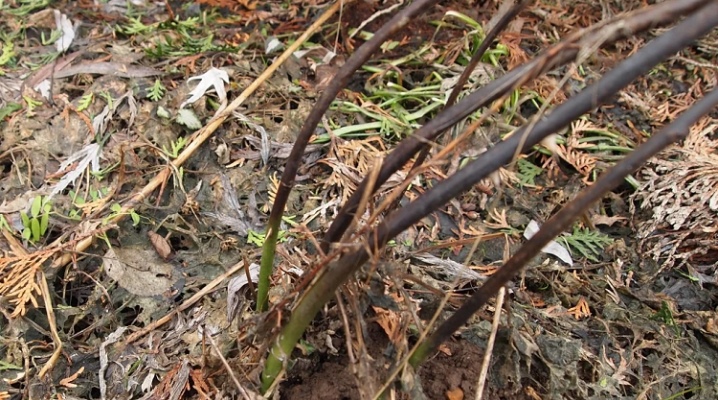
Roses are the main decoration of the garden for many summer residents, which is quite understandable: this flower is very beautiful and always pleasing to the eye. However, gardeners are often faced with such a problem as blackening of a shrub: black spots or plaque form on it. This phenomenon does not bode well for roses. It is necessary to fight with it, otherwise the risk of death of the bush will increase. About why the rose turns black and what to do about it, we will tell you in this article.
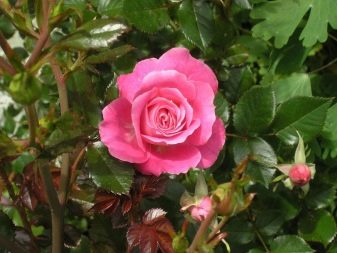
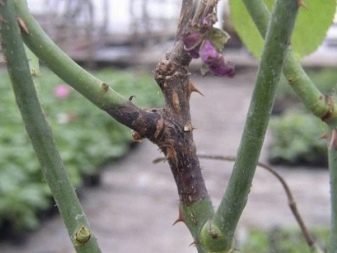
Signs of the disease
You can often notice that the stem, bud or foliage of a garden or room rose turns black. This is often caused by bacterial cancer, or fire blight. The first sign of this disease is depressed specks of a brownish tint that affect the stem. Gradually, plant tissues in this area begin to die off, which is why deep ulcers with a dark brown tint appear as a result. Those stems that have been affected begin to dry over time. However, sometimes blackening is caused by gray rot... As a rule, with this disease, near the bud and even in its middle, you can notice a mucous substance of black color, as well as the browning of the petals.
Often, the cause of black spots is and black spotalso known as marsonina. As a rule, this disease is activated in the middle of summer, when warmth is established, accompanied by heavy rains. The occurrence of this disease is evidenced by light specks of a round shape - it is on them that black fungal spores appear in the future, which increase in size. The leaves, which were affected, acquire a brownish tint, begin to curl and fall off.
With the same frequency, a rose growing in the street or at home in a pot affects powdery mildew... Signs of this disease (grayish plaque) can initially be seen on the stem, and then on flowers that are deformed and subsequently do not open. With this disease, the outer petals that have been affected begin to blacken, curl and fall off. Various viruses and fungi, of which there are more than a dozen, often become the cause of blackening.
As a rule, they precipitate young shoots, stems and leaves, bypassing the buds themselves, which is their distinctive feature.
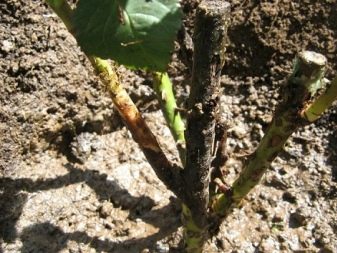
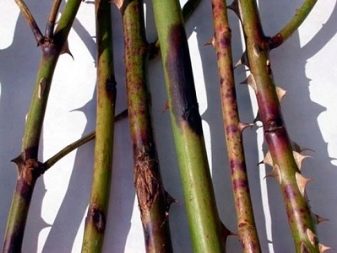
Reasons for defeat
There are many reasons why a rose bush could be affected, as a result of which it began to turn black.
- One of them is the excessive thickening of the plantings. This interferes with the full circulation of air masses, which creates ideal conditions for the activation and further development of various kinds of diseases.
- The disease can also occur with improper care, in particular, with an incorrect watering regime. Due to the abundance or, conversely, a deficiency of moisture, a fungus often occurs, which is the reason for the blackening of plants.
- Top dressing, which, in the opinion of some, only benefits the culture, can also become the cause of the problems that have arisen. Of course, this opinion is erroneous. An excess or a lack of fertilizer will be equally detrimental to the rose bush. So, if the plant is overfed with nitrogen, then this will contribute to the development of powdery mildew. The same will happen if there is not enough calcium in the soil where the rose bush is grown.
However, it should be noted that the blackening of the plant is not always associated with a fungal or viral disease.So, many summer residents are faced with the defeat of the cuttings, which are used for reproduction of the rose bush: these cuttings turn black and subsequently do not give roots.
This happens, as a rule, due to freezing or due to the fact that the cuttings were removed from diseased shrubs. In this case, blackness must be removed from the middle of the stem, and then treated with a growth stimulant.
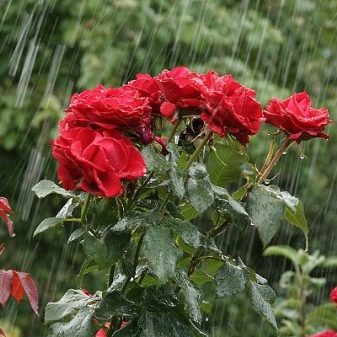

Control measures
The process of treating different fungal diseases proceeds in the same way, mainly only the symptoms of the diseases differ.
- So, in order to get rid of the disease and return the pink shrub to its former beauty, first you need to eliminate all its affected parts. In this case, you should not regret, otherwise you will not be able to stop the disease, which is why there is a great risk that it will spread throughout the garden and spoil more plants. Note that it is best to completely uproot and eliminate heavily affected shrubs, since they are unlikely to be cured.
- All affected parts must be eliminated by incineration without fail. But you should not add them to the compost: using such fertilizer in the future, you will only spread the fungus throughout the entire area.
- After the removal of diseased areas, the plants must be treated with a special industrial product. But you should not resort to the help of folk remedies: if the disease has already hit the flower, then they will not help. Home-made mixtures can be used either for prophylaxis or as an addition to a purchased drug, otherwise they will be powerless.
- To treat rose bushes and get rid of a particular disease, it is necessary to resort to products that contain active ingredients such as famoxadone, penconazole, cymoxanil, epoxiconazole or cyproconazole. These drugs include "Topaz", "Skor", "Profit Gold", "Healer" and "Rakurs". It is necessary to carry out treatments at intervals of a week, but you should not do more than three sprays in one season.
- Separately, we note that it is necessary to spray not only the plant itself, but also the soil around it, since the fungus could also remain in it.
Before you start using this or that drug, do not forget to carefully read the instructions for its use, which is located on the package.

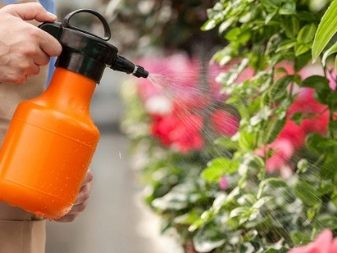
Prevention methods
Strictly following preventive measures will help you prevent many of the problems that bother gardeners.
- It is worth checking the rose bushes regularly. So you can notice the disease or other problem in time and prevent the situation from worsening.
- Do not forget about the quality care that every cultivated plant needs. Provide shrubs with high-quality shelter during cold weather to prevent them from freezing. Add water to the soil in time, but do not overdo it: a large amount of moisture leads to the appearance of fungus. Be sure to cut the shrub to prevent density, and do not forget about the introduction of complex fertilizers, which will contribute to the development and growth of the rose bush, and will also help strengthen its immunity.
- Towards fall, when the season ends, remove old foliage from the area. Parasites or fungal spores can easily hide under it. There they will endure the winter frosts almost painlessly and will be activated again when conditions are favorable for this.
- Remove weeds from the area. It is on them that harmful insects usually live, which not only cause huge damage to cultural plantings, but also often carry various diseases dangerous to plants.
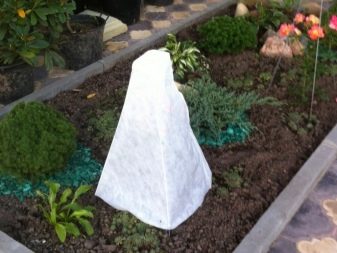
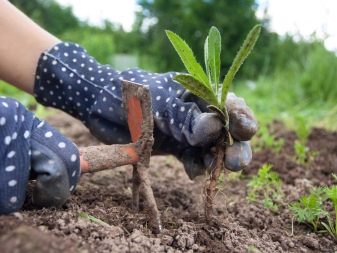

































































































The comment was sent successfully.